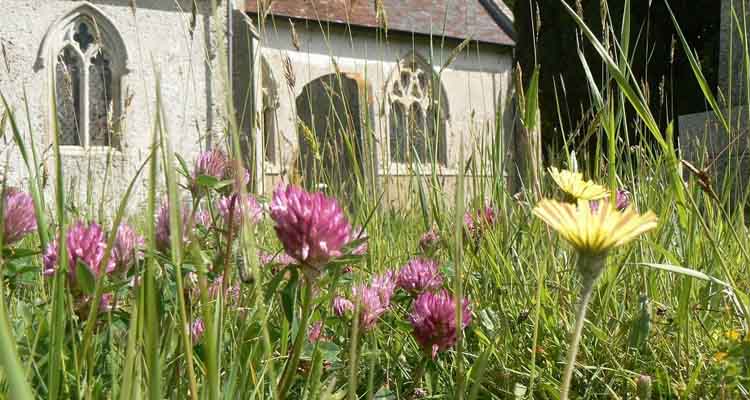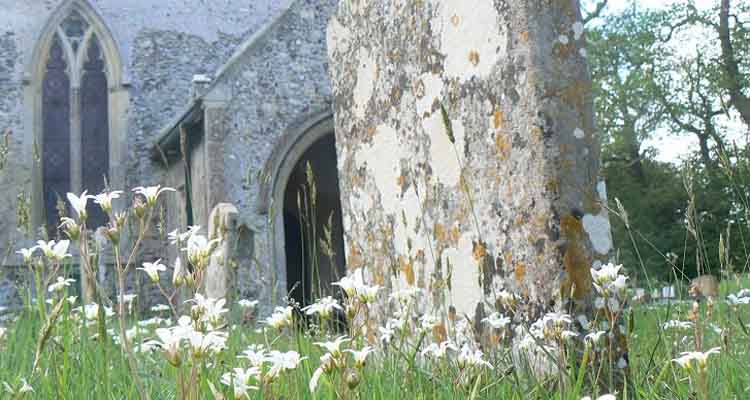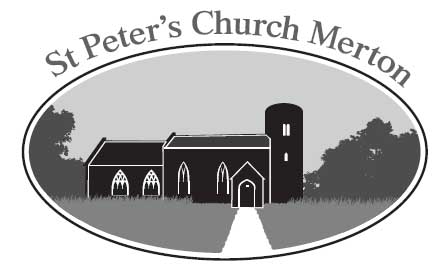
Conservation
The churchyard at St Peter’s sits on an abrupt rise in the ground, probably glacial in origin, with the land dropping away to the south towards Merton Hall. Since the early 19th century Merton Park has completely surrounded the church, which is now approached through the park gates. One effect of this is that substantial areas of mature trees border the churchyard. Another is that the surrounding land is largely unimproved grassland with a diverse flora typical of Breckland – which is shared by the churchyard. Historically, this area was generally grazed by sheep, and in the past the churchyard itself was sometimes “mown” by sheep.
The churchyard has been part of the Norfolk Wildlife Trust’s Churchyard Conservation Scheme since 2017, but it has been managed with conservation as a priority for much longer than this. The aim is to provide a variety of wildlife habitats at the same time as maintaining a churchyard that fulfils the needs of villagers and others visiting graves. The approach to the church, and the area around recent graves, are regularly mowed, while other areas are managed less intensively to encourage a wide range of wildflowers and provide a varied habitat for other wildlife.
In 2017, the churchyard was surveyed for the Norfolk Wildlife Trust, and over 100 species of flowering plant were identified, including three species that the Trust consider to be dependent on churchyards – lady’s bedstraw, meadow saxifrage and pignut. Over 100 species of moth were recorded in a single night in 2019, and a recent survey found four types of bat using the churchyard. Butterflies, bees and other insects abound, and resident birds have included swallows nesting in the porches – a delight to have them, though sometimes rather inconvenient!


